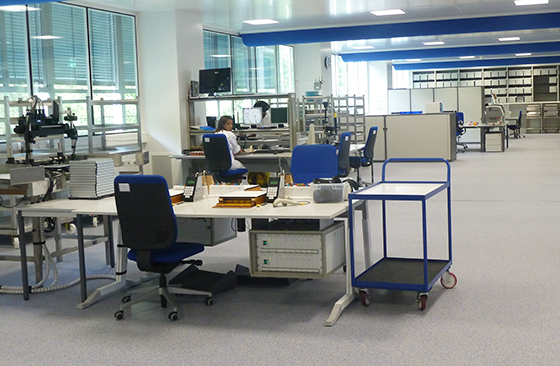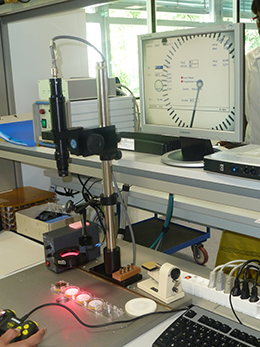
After Le Locle and Saint-Imier, it’s the turn of the chronometer inspection bureau in Bienne to move into new premises complete with top of the range equipment. A bright and airy workspace in which around 700,000 pieces were analysed in 2013.
On 12 June this year, local and cantonal authorities together with press and watch industry representatives were invited to attend the inauguration of new COSC premises in Bienne, nicknamed the BOBI (Bienne observation bureau). Previously located in the city centre, the bureau has taken a step closer to its clients by moving to the city’s industrial zone, where spacious new premises are home to around 45 employees, including twenty on secondment, whose task is to certify horological movements submitted by manufacturers. With 11,000 watch industry employees, the canton of Berne is Switzerland’s second largest watchmaking canton, behind Geneva and just ahead of Neuchâtel. In 2013, 1,802,447 timepieces were submitted to the three COSC bureaux and 1,688,441 obtained official chronometer certification.
The batches to be inspected, contained in sealed boxes, arrive at the bureau by post or delivery van, or are sent by special courier. Before they are handled, employees check and register the serial numbers. The path is then clear for sixteen days of certified tests in accordance with the standard ISO 3159. It makes no difference how much the timepieces cost - all receive equal treatment, regardless of the price segment in which the mechanisms will be sold at a later date.
In the capacious premises at Les Champs-de-Boujean there’s plenty of room to expand if the number of applicants increases. Inside the laboratory, dust and humidity levels are regularly controlled as these factors can influence the accuracy of mechanisms. During the test phase - applied to movements as opposed to finished watches - the chronometer mechanisms are wound mechanically each day, including at weekends. To measure their precision, the chronometers are repositioned every 24 hours (placed with the crown at 3, 6 and 9 o’clock, with the dial alternately facing up or down). The timepieces will then be subjected to three different temperatures (8, 23 and 38°C) in chambers designed for this purpose. During each of these tests, a record is made of the time indicated by the chronometer in relation to a reference time. The tolerance is minus four seconds and plus six seconds per day. The reference time is provided by two atomic clocks set to GMT. Data is input and calculated entirely automatically by computer. Passing these rigorous tests proves not only that the movements have been manufactured from components of the highest quality, but also that meticulous attention has been paid to their assembly and timing.
The observation bureaux are the only laboratories in the world to apply this standard industrially and to issue such a high number of official chronometer certifications each year. Founded in 1973 in its present form, the COSC, in terms of the Swiss civil code, is a non-profit association recognised as beneficial to the public. It was created by five watchmaking cantons (Berne, Geneva, Neuchâtel, Soleure and Vaud), in conjunction with the Federation of the Swiss Watch Industry. It has three laboratories: Le Locle, Saint-Imier and Bienne. Its management, which coordinates the work of all three bureaux, is based in La Chaux-de-Fonds. The future of the COSC is closely bound up with that of its clients and their changing requirements. While the COSC must constantly seek to improve the productivity of its inspection methods and above all their accuracy, it also plays a decisive role in watchmakers’ ongoing quest to develop products at the cutting edge in terms of performance.
July 02, 2014


 News
News 
